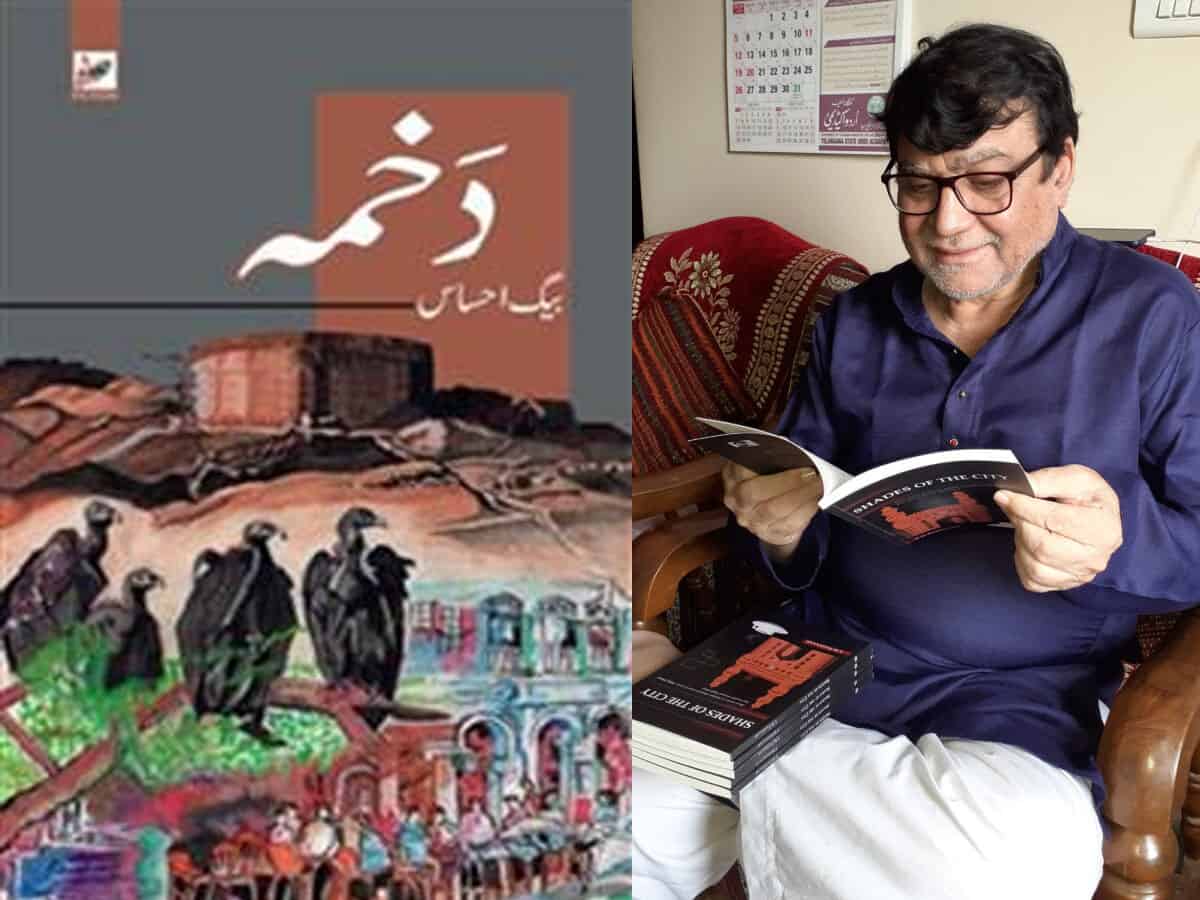
Mohammed Baig Ehsas was one of the most progressive and prolific Urdu writers of recent times. He made a name for himself through his many short stories that revolve around the heritage, history, tradition and people of Hyderabad. He famously won the Sahitya Akademi Award (Urdu) in 2017 for his short story collection Dakhma. He would have turned 75 on Thursday.
Baig Ehsas was born in 1948, merely months before Hyderabad’s annexation by India, which was marked by several administrative, ecological and infrastructural changes. Baig Ehsas was first-hand witness to this transformationof the city of Hyderabad. His works are a reflection of the same. His award-winning collection Dakhma, published in 2015 portrays just that.
Dakhma is a collection of 11 short stories, with a central theme that revolves around the lives of the people of Hyderabad after the city’s ascension to India.
The short story Dakhma, after which the collection is named, revolves around the death of Sohrab, a Parsi, and the narrator’s fears surrounding Sohrab’s last rites.
A Dakhma or a Tower of Silence is a circular raised structure used for Parsi death rituals. The corpse is placed at the top of the structure, to subject it to decomposition by natural processes and eaten away by vultures. It is believed that vultures only arrive upon the death of the righteous. But vultures had stopped frequenting the city, owing to the changing landscapes and conforming of rituals. Yet, vultures flock to Sohrab’s corpse as soon as he is laid there, much to the narrator’s relief.
Dakhma, full of nostalgia, captures the anxieties of Hyderabadis in the face of changing times. Baig Ehsas intertwines the past and present of the Parsi community in Hyderabad with flawless storytelling and imagery that draws the reader in, keeping them hooked to the book.
Curfew, another famous stories from the collection centres around a woman who gets trapped, unable to contact her husband due to the sudden imposition of a curfew. The story, hauntingly allegorical, details the suffocating and anxiously tense situations endured by the citizens during state curfews.
Apart from Dakhma, some of his other noted short story collections include Khosha-e-Gandum and Hanzal, both published in 1979, containing stories set in the backdrop of Hyderabad, chronicling the lives of people of the city, as is often the theme of Biag Ehsas’ stories.
Dakhma was so highly rated among Urdu literary critics, that in 2020, the Allahabad University’s Urdu Department included the story in their MA Urdu syllabus.
The same year, select stories from the collection Dakhma were translated into English by S M Fasiullah’s book Shades of the City. Apart from Fasiullah, HCU Professor Tutun Mukherjee and former OU English Literature Professor Khalid Qadri also contributed to the process of translation.
Baig Ehsas’ short stories aren’t merely of literary value, they are accounts, parts of Hyderabad’s heritage and tehzeeb, pieced together; a looking glass into the history and culture of the city and the transformation the city went through.
I believe Baig Ehsas’ works should be viewed as a documentation of the evolution of Hyderabad. This is one of the most important reasons, apart from his literary prowess, that brought him the national acclaim. Baig Ehsas’ works brought much needed attention to the stories of the South, which have often found themselves bereft of recognition or acknowledgement at a national level.
And, honestly the writer’s national acclamation is nothing short of extraordinary. He was one of the most progressive Urdu writers in recent times.
Born and raised in Hyderabad, Baig Ehsas was among the first batch of scholars to complete their Ph D from the then newly found Urdu Department of the University of Hyderabad. His doctoral thesis, submitted in 1984, shone light on the life and works of progressive writer and playwright Krishen Chander.
He served two terms as the Head of Department of Urdu Studies at Osmania University after completing his PhD. Post this he served as Professor and later, Head of the Department of Urdu, UoH, before retiring in 2013.
Up until his passing, Baig Ehsas was as an executive member of Idara-e-Adabiyaat-e-Urdu and the editor of Sab Ras, a monthly published by the Idara.
Baig Ehsaas had honours bestowed on him that not many have been lucky enough for. His 2017 Sahitya Akademi Award for Dakhma marked him as the first Hyderabadi in 20 years to win the award. Gian Singh Shatir had won it in 1997.
In 2016, the Telangana Urdu Academy presented him with the Makhdoom Award. He was also the recipient of the Jashn-e-Adab award for Excellence in Fiction.
During the pandemic, Baig Ehsas fell victim to the COVID-19 virus after which his health started deteriorating. Eventually, Baig Ehsas, passed away in September 2021 following cardiac arrest; leaving behind a remarkable legacy.
Baig Ehsas’ works and contribution to Urdu have all but immortalised him. So long as those who love and promote Urdu remain, Baig Ehsas’ name will never be forgotten.
